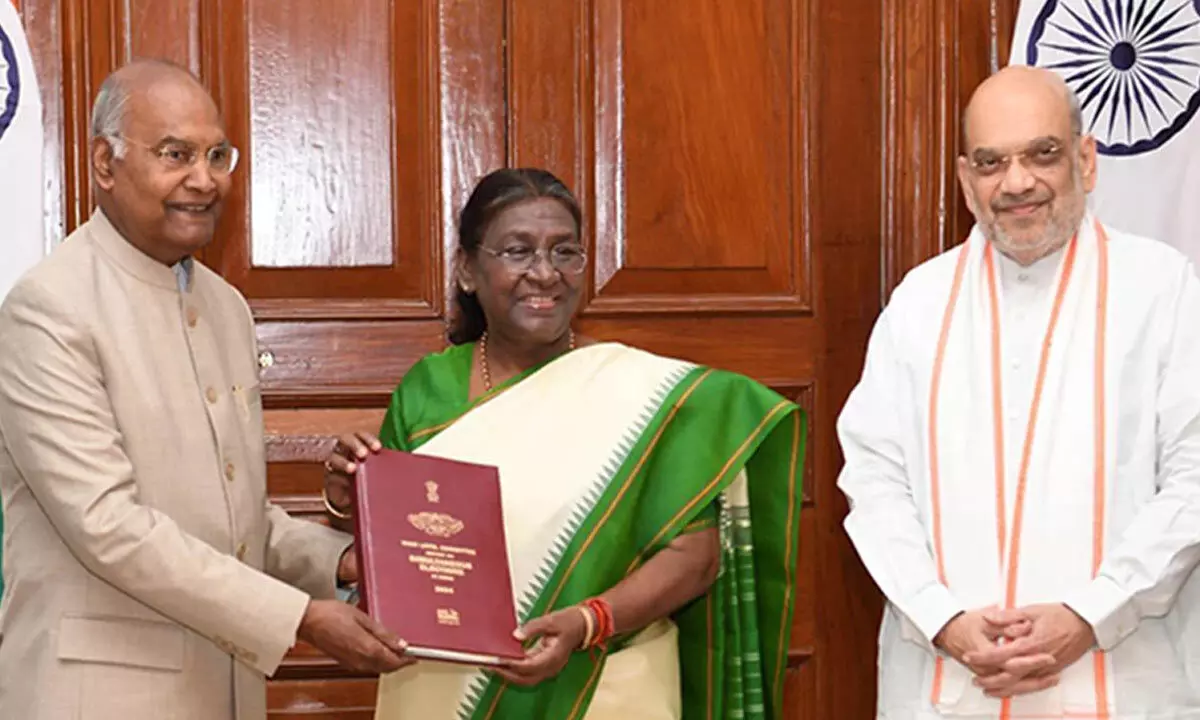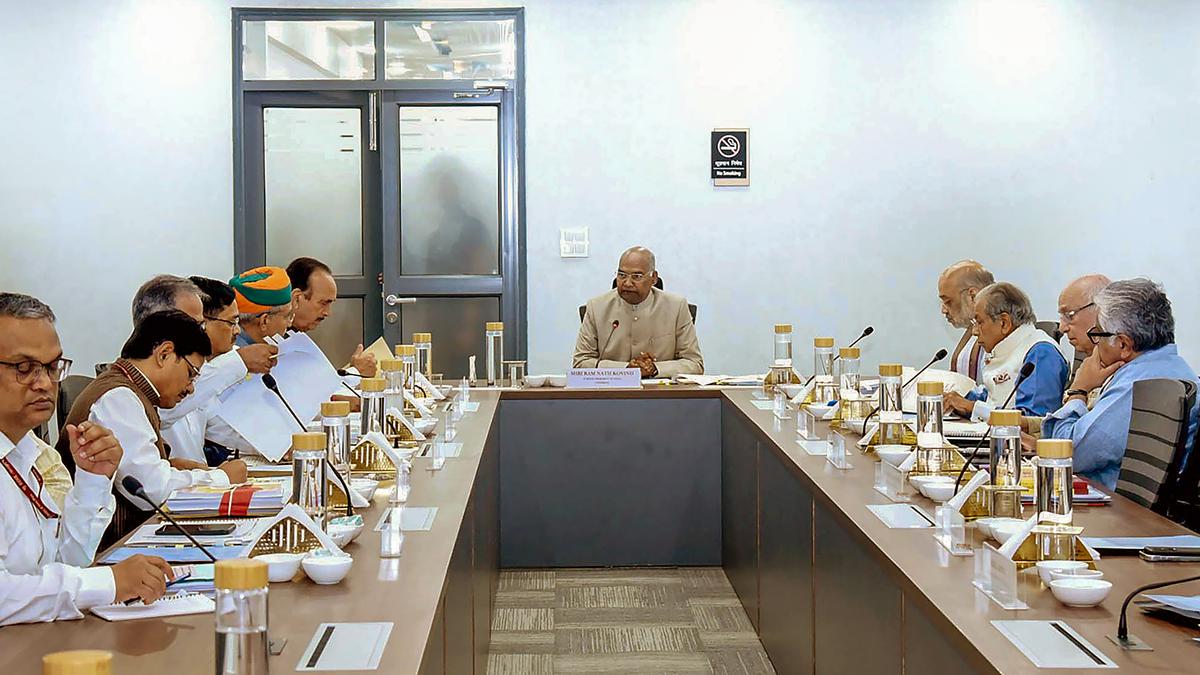President Droupadi Murmu was met by the High-Level Committee (HLC) on Simultaneous Elections, which was established under the chairmanship of former Indian President Ram Nath Kovind, to submit it’s report.
The report, which is 18,626 pages long was created after 191 days of intensive research effort and stakeholder and expert interaction after the report’s formation on September 2, 2023.

After giving serious thought to every option and point of view, the Committee advocated a two-step process that would result in simultaneous elections. Elections for the State Legislative Assemblies and the House of the People will be held simultaneously as a first step. The second phase will involve timing municipal and panchayat elections to coincide with those of the House of People and the State Legislative Assemblies.
Simultaneous LS and Assembly vote presented as a first step
A high-level commission, in its report on ‘one nation, one election’ delivered to President Droupadi Murmu on Thursday, suggested that simultaneous elections be held for the Lok Sabha and state assemblies as a first step, followed by synchronized local body polls within 100 days.
The group led by former president Ram Nath Kovind stated in its report that simultaneous polls will help save money, promote development and social cohesion, enhance “foundations of the democratic rubric” and help achieve the goals of “India, that is Bharat” and encompass more than 18,000 pages.

The Lok Sabha and the Law Commission are expected to recommend simultaneous polls for all three tiers of government in India, starting with 2029.
This move aligns with B R Ambedkar’s vision for uniformity in the electoral process, advocating for the Union to conduct elections.
Prime Minister Narendra Modi is a strong supporter of this proposal.
The 2024 general elections for the Lok Sabha and four state assemblies are expected in April-May, with the Election Commission potentially announcing these polls as early as Friday.
However, the Constitution of India, influenced by the recommendations of prominent business organizations like CII, FICCI, ASSOCHAM, and the Committee, has been reformed to address the economic impact of asynchronous elections. These organizations, along with economists, have argued that asynchronous elections can fuel inflation and slow the economy.
Awaiting Law Commission’s report too
The Law Commission, led by Justice Ritu Raj Awasthi, is set to present a report to the Central Government on the concept of a ‘unity government’ to prevent instability.
The report, titled ‘one nation, one election’, may propose constitutional amendments to facilitate simultaneous elections across the country by mid-2029.
The proposed changes would introduce a new chapter to the Constitution, potentially overriding existing provisions related to assembly terms. The aim is to streamline electoral processes, including the implementation of common electoral rolls across all government tiers.
Additionally, the Constitution and Law Commission are working on a phased approach to align legislative assemblies over the next five years, with the ultimate goal of conducting the first simultaneous elections in May-June 2029, coinciding with the 19th Lok Sabha elections.
The Commission may propose the establishment of a “unity government” to address scenarios such as governmental instability or hung assemblies. A high-level committee chaired by former President Ram Nath Kovind is exploring complementary changes to the Constitution and existing legal frameworks to enable synchronized elections across all levels of government.
The Law Commission’s recommendations will feature prominently in the committee’s forthcoming report.
The concept of “One Nation, One Election” has been experimented with in the past, with elections for the Lok Sabha and state assemblies held concurrently in 1952, 1957, 1962, and 1967. Proponents argue that synchronized elections are development-centric, alleviate the financial burden associated with repeated polls, combat black money and corruption, and obviate the need to repeatedly deploy government employees and security forces for election duty.
Recommendations’ gist
The Law Commission is set to recommend holding Lok Sabha, State Assemblies, and local body elections by mid-2029.
The Commission proposed amendments to the Constitution regarding simultaneous elections and synchronize legislative terms in three phases over five years.
The first simultaneous elections will be held in May-June 2029, followed by the 19th Lok Sabha elections.

The Commission recommended reducing the duration of state assemblies by three or six months.
If a government falls due to no-confidence or a hung House, the Commission will recommend forming a “unity government” with representatives from different political parties. If this doesn’t work, the Commission will recommend fresh elections for the remaining term of the House.
However, The Lok Sabha elections in India have led to a virtual paralysis of administration, affecting India’s growth prospects.
The Model Code of Conduct (MCC) comes into play just after the elections are announced by the Election Commission (EC), causing key policy decisions to be delayed.
This results in the implementation of ongoing projects being derailed during election periods. Simultaneous elections can reduce the cost of elections, reduce the deployment of security forces, and end horse-trading by elected representatives.











